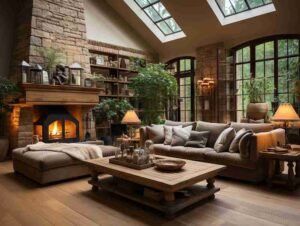Toronto homeowners looking to increase their living space are often caught between two major options: building up or building out. Each approach offers its own unique set of advantages and drawbacks—both in terms of cost and lifestyle impact. With housing demand on the rise and urban lot sizes staying the same, it’s more important than ever to make informed decisions when investing in your property.
Whether you’re trying to accommodate a growing family or add long-term value to your home, understanding the financial, logistical, and regulatory differences between vertical and horizontal expansions can save you from costly missteps. In a city where every square foot is a premium, choosing how to expand is a decision that requires both strategy and foresight.
For homeowners exploring home additions in Toronto, the route you choose can significantly impact your home’s functionality, aesthetic value, and future resale potential.
Vertical Expansion: What Building Up Really Means
Adding a second or even third storey to your existing home is a popular way to gain square footage without encroaching on your outdoor space. It’s a smart solution for properties with smaller lots or backyards that homeowners want to preserve.
However, vertical additions often involve complex engineering, especially if the existing foundation wasn’t built to carry extra weight. Reinforcement or full replacement of the foundation may be required, which can increase costs significantly. According to HomeStars, the average cost of a second-storey addition in Toronto can range from $200 to $350 per square foot, depending on the materials and structural modifications needed.
Moreover, building up requires a deep understanding of city zoning bylaws. Certain neighbourhoods restrict the height of residential buildings, and you’ll likely need a zoning variance before moving forward with construction.
Building Out: More Land, More Options
On the other hand, building out allows you to extend your home’s footprint into the backyard or side yard. This approach is typically simpler in terms of structural engineering but can lead to issues if your lot size is limited or your outdoor space is already constrained.
The average cost for ground-floor additions in Toronto tends to fall between $175 and $300 per square foot. It may be less expensive than a second-storey addition from a pure construction perspective, but it often involves significant landscaping and excavation work, which can offset those savings.
Additionally, some areas have tight setback regulations that determine how close you can build to your property lines. This can reduce the available space for an extension and create challenges when designing the addition.
Permit Process and Legal Hurdles
Regardless of whether you build up or out, you’ll need to navigate Toronto’s permitting system. Applying for a building permit requires detailed architectural drawings, engineering reports, and possibly variances from the Committee of Adjustment.
The process can take several weeks or even months depending on the scope of your project. Expect additional costs related to application fees, legal consultations, and design revisions to satisfy municipal requirements.
It’s worth noting that skipping the permit process is never advisable. Not only can it result in hefty fines, but it could also create obstacles when reselling your home, as unpermitted work can be flagged during inspections.
Living Through the Renovation
One of the most underestimated factors in the build-up vs. build-out debate is the impact on your daily life during construction. Vertical additions may require you to vacate your home entirely for safety and logistical reasons, especially if the roof needs to be removed.
Building out, while still disruptive, is often more manageable for homeowners who want to live onsite during the project. However, both options will come with noise, dust, and limited access to certain parts of your home.
Renting temporary accommodation or budgeting for a short-term stay elsewhere may be a necessary part of your planning.
Financial Incentives and Return on Investment
Cost is not the only consideration—return on investment (ROI) plays a critical role. A well-designed addition that complements the existing structure and meets modern lifestyle needs can add considerable value to your property.
In hot real estate markets like Toronto, where detached homes are in high demand, a second-storey addition can yield up to a 75% ROI according to local appraisers. Ground-floor additions, especially those that add functional space like kitchens or family rooms, also perform well in resale situations.
However, ROI depends heavily on location, design quality, and neighbourhood comparables. Overbuilding for the area can lead to diminishing returns.
Energy Efficiency and Long-Term Operating Costs
Expanding your home doesn’t just affect your mortgage or construction loan—it changes your ongoing expenses too. Larger homes require more energy to heat and cool, particularly in a climate with cold winters and humid summers.
When planning your addition, it’s essential to factor in insulation, energy-efficient windows, and HVAC upgrades. Vertical additions may require entirely new heating systems to maintain even temperature distribution across floors, while horizontal expansions might benefit from radiant floor heating or zoned systems.
Government rebates like those available through the Canada Greener Homes Grant can help offset some of these costs if energy-efficient materials and systems are used.
Architectural Harmony and Neighbourhood Fit
A seamless addition should feel like a natural extension of your home, not a mismatched afterthought. Whether you’re going up or out, hiring a qualified architect is essential to maintaining visual balance and enhancing curb appeal.
Building up often requires more care to blend rooflines and match existing materials, while building out demands attention to flow and natural lighting. Poorly executed additions can detract from a home’s aesthetic, making it stand out for the wrong reasons in an otherwise cohesive neighbourhood.
Additionally, certain areas in Toronto are governed by heritage conservation districts or design guidelines, which impose stricter rules on exterior changes. Researching your area’s designation status ahead of time is a wise move.
Making the Decision That’s Right for You
So, which path is right for you—up or out? The answer lies in your goals, budget, lot characteristics, and how you plan to use the new space. For homeowners with limited land and a desire to maintain their outdoor environment, building up might be the more logical choice. Those with larger lots or simpler renovation needs might benefit from expanding outward.
In either case, professional consultation is crucial. Architects, builders, and urban planners familiar with Toronto’s regulatory landscape can help identify the most cost-effective and structurally sound solution for your specific situation.
Where Form Meets Function
Adding space to your Toronto home is a significant investment, not just in terms of money but also in lifestyle, time, and long-term value. Choosing whether to build up or out is not a decision to take lightly. Each path comes with trade-offs, but when executed with care and expertise, either can dramatically improve your living experience and increase your home’s market value.
Ultimately, the most successful additions are the ones that blend thoughtful design with practical outcomes—enhancing not just the square footage, but the way you live in your home.







